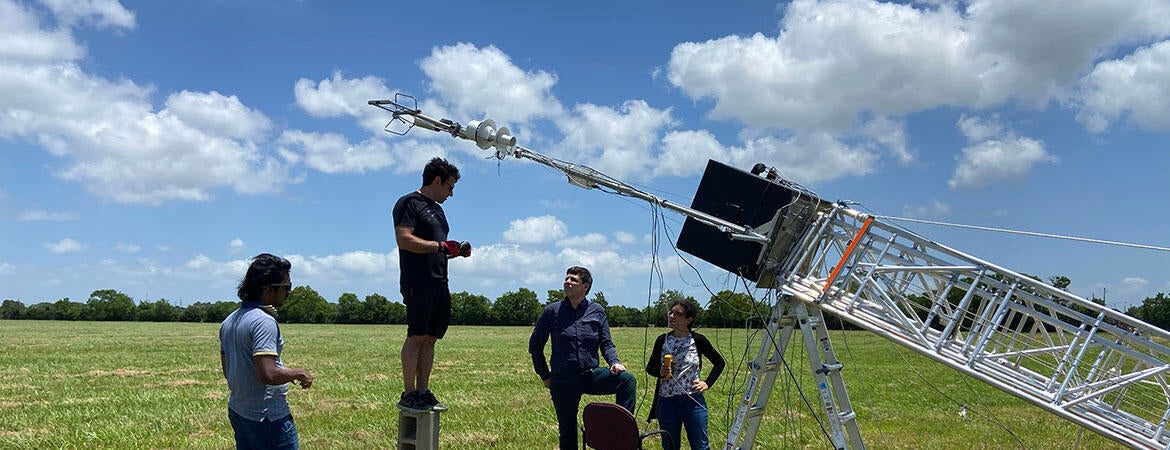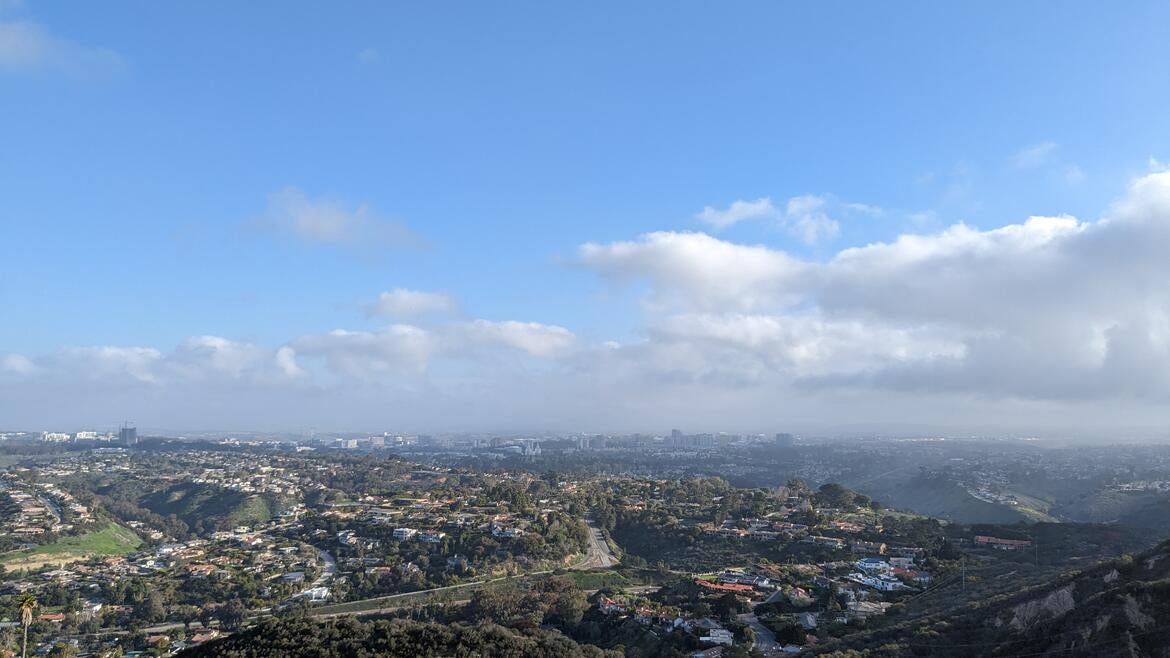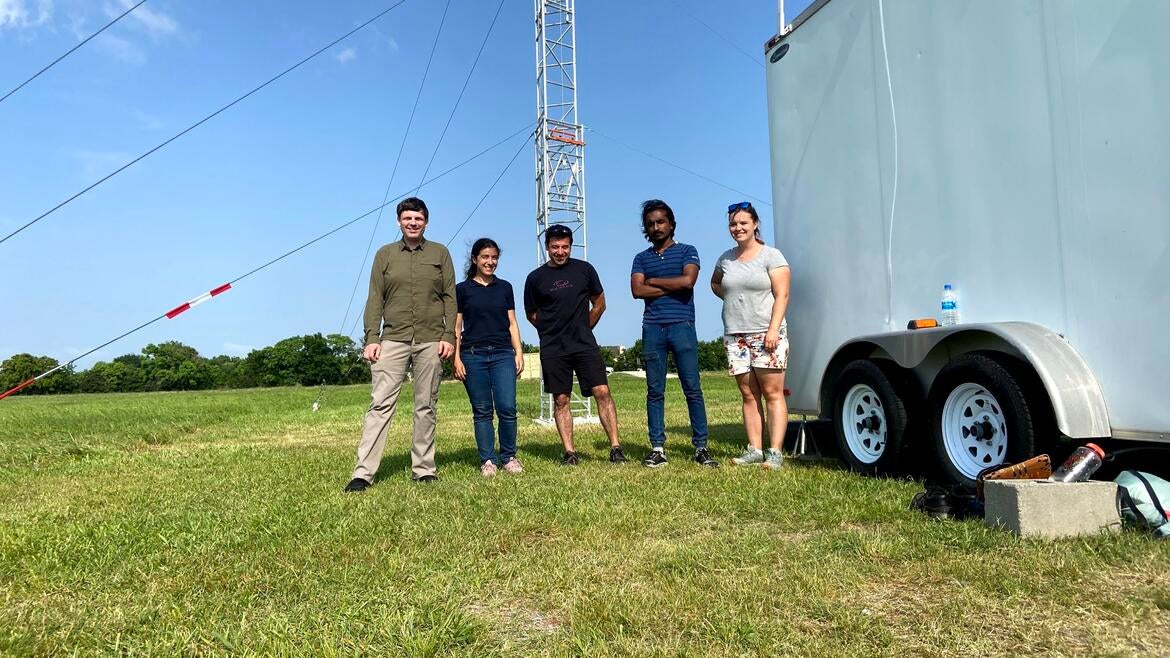
Markus Petters can still recall two significant threats to the environments that were big news during his childhood: acid rain and depletion of the ozone layer.
Both of these problems were successfully addressed through environmental engineering. Both of these problems made a tremendous impression on a young Petters fascinated by chemistry and environmental science — inspiring him to pursue his passion and help engineer solutions to other pressing problems high up in the atmosphere, in the clouds.
Even to scientists, clouds are a mystery.
So are the atmospheric aerosols that hover, glide, swirl, and collide, unseen (but sometimes seen as a thick haze), above the planet.

Unraveling the mysteries of these aerosols is the research focus of Markus Petters, a professor in the Marlan and Rosemary Bourns College of Engineering’s (BCOE) Department of Chemical and Environmental Engineering. He joined the college in July after 14 years at North Carolina State University.
In his work, Petters studies the emission and formation of particulate matter — matter composed of small, solid particles and liquid droplets such as car exhaust and industrial smog — in the atmosphere where people live, how that matter moves and chemically evolves, and how it affects clouds.
“All of these processes are critical for understanding how air quality affects health outcomes, visibility, precipitation, and climate,” Petters said, “all of which are important for quality of life.”
Ultimately, this process-level understanding can guide atmospheric models to produce more accurate climate predictions and inform government regulators on how to best protect the public from pollution.
Atmospheric aerosols are minute particles of solids and liquids that float in the atmosphere and can degrade human health. While most — including dust, smoke, fog, sea spray, and volcanic ash — are natural, some — including sulfates, nitrates, and black carbon — are made by humans through activities such as burning fossil fuels, agriculture, and industrial processes.
It’s a complex field that Petters found by accident, he said.
He grew up in a small town in Germany, with a passion for chemistry and environmental science.

“The dominant environmental concerns at the time were acid rain and its impact on forests and stratospheric ozone depletion by chlorofluorocarbons,” Petters said. “Both were pressing environmental problems that involved the atmosphere. Both were successfully addressed through appropriate environmental engineering approaches.”
That success inspired him to pursue his passion for research focused on chemical processes that negatively affect natural environments — such as the atmosphere — and how to develop engineering-based solutions.
“I was always fascinated by the atmosphere,” Petters said, “which is much more dynamic than other environments such as soils, sediments, lakes, and coastal regions, which were the focus of my undergraduate research.”
Still, he knew little about aerosols before starting his doctoral program at the University of Wyoming, where he took part in an aircraft-based study that probed the mysteries of low-lying clouds near Los Angeles. That led first to a dissertation on the interplay between particulate matter and cloud formation. He later served as a research scientist at Colorado State University, studying laboratory-generated aerosols' physical and chemical properties — for example, the water droplet and ice crystal formation potential of biomass-burning aerosols.
“I liked the work and research questions, and thus [I] continued to focus on aerosol measurements,” Petters said.

Over time, the breakthroughs have been rewarding. Asked about his favorite career achievement, Petters said that a few years ago, he and his doctoral students developed a new experimental method to synthesize dimer particles (a particle made up of two smaller units that cluster together) and then identify the conditions when those particles coalesce into spheres, which happens when particles liquefy — as when butter melts from solid to liquid upon heating.
“The physics of sub-100 nanometer particles is such that one cannot ‘grab’ and ‘trap’ them, much less take two of them and collide them in a controlled manner,” he said. “Our method allows us to do this at least in a statistical sense . . . Although our technique remains indirect and is somewhat finicky to implement, I remain excited about this work because it gets us one step closer to generating particle shapes and compositions using a controlled process.”
These steps heighten understanding about the lifespan of air pollution in the atmosphere.
Such work will be elevated now that he’s joined BCOE, Petters said, citing engineering resources such as machine shops, the broad pool of UCR students interested in solving engineering problems, and access to advanced facilities at the Center for Environmental Research and Technology (CE-CERT) — including vehicle-emission testing laboratories and the world’s largest environmental indoor atmospheric chamber.
“The infrastructure at BCOE and at CE-CERT will allow me to pursue work through collaborations that would have been impossible for me to achieve previously,” he said.
Outside of work and its mysteries, Petters relishes the game of chess. He describes himself as a “scientist passionate about aerosol, technology, free software, and chess” on his X (formerly Twitter) profile.
“I play chess as often as I can afford,” he said. “I learned chess as a child, and I am drawn to the balance in the game between art, intuition, geometric patterns, and raw mathematical calculation. Perhaps it resembles problems in science and engineering.”
Header Photo: Chemical and Environmental Engineering professor Markus Petters (third from left) conducting atmospheric research using a flux tower with members of the Tracer Aerosol Convection Interactions Experiment (TRACER) research group in Texas. Photo courtesy of Markus Petters